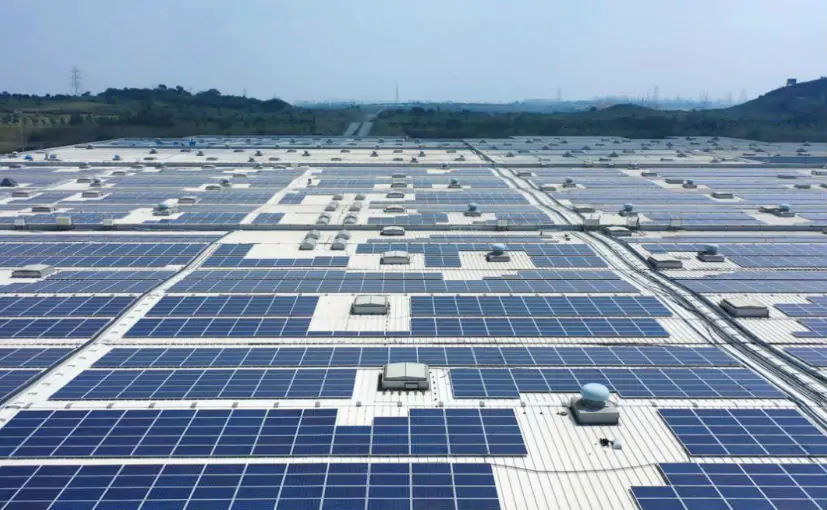Poor financial health of DISCOMs continues to be a worry for India which is investing heavily in renewable sources of power with a focus on affordability, security and environment. In 2019 large-scale grid curtailment by cash-strapped DISCOMs affected the returns on renewable projects, especially in Andhra Pradesh and Telangana, leading to credit downgrades.
Woodmac solar analyst Rishab Shrestha told pv magazine, “Despite the ‘must run’ status of renewable power, wind and solar projects still faced large-scale grid curtailment in 2019, owing to the ongoing financial distress of state distribution companies. This has affected the returns on renewable projects, especially in Andhra Pradesh and Telangana, leading to credit downgrades.”
In the upcoming budget, “The government could announce a scheme akin to UDAY (2015) to address the financial constraints of DISCOMs. Captive renewable energy policy could be announced with exemption from cross subsidy and transmission charges for clean energy plants beyond factory boundaries,” said Care Ratings analysts adding that these reforms would be more on ensuring that the DISCOMs bring about the required changes in operation to get any further support from the government.
Most manufacturing units in the micro, small and medium enterprise (MSME) segment have poor infrastructure and small roof size, which allows them to meet barely 5-10% of their energy consumption from solar installation, whereas energy consumption accounts for 25-40% of their total manufacturing cost (excluding raw material cost). Some MSMEs involved in the business of foundry, forging and dyeing have even higher energy cost of up to 50%.
In such a scenario, captive solar power plants make a lucrative proposition for growing MSMEs.
Finance push for rooftop
On a positive note, even amid rising DISCOM stress, India is estimated to have added 11 GW of renewable power generation capacity with 9 GW from solar.
“The competitive price of renewables (averaging less than US$42/MWh) has led to an addition of 11 GW of renewable capacity expected in 2019 with solar contributing approximately 9 GW,” said Shrestha.
Going further, in year 2020 the country is expected to add over 15 GW of renewables capacity on the back of improved cost economics.
“We expect Indian power generation to grow by 5% on the back of improved economic growth in 2020. With several plants under construction, we expect installed capacity to increase by over 15 GW, mostly coming from new renewable installations. The economics of solar projects are expected to improve as safeguard duties on modules come to an end in July 2020,” shared Shrestha.
The renewables growth can be further enhanced with push to rooftop solar adoption in the upcoming budget.
“Renewable, like any other infrastructure business, is capital-intensive and availability of funds at competitive price is an important ingredient for growth. While the Reserve Bank of India (RBI) has brought down the repo rates periodically, it hasn’t been translated to the banks passing on the benefit to the end customer. Add to this, the tight lending environment on liquidity front—there are a handful of financial institutions doing fresh project finance. This needs to change soon to uplift investment and confidence in the industry,” shared rooftop solar developer CleanMax Solar’s chief financial officer Nikunj Ghodawat.
“Additionally, removal of capping in the priority-sector lending limit for rooftop solar projects will ensure higher credit financing and give a much needed boost to the sector.”
“A comprehensive Credit Guarantee Mechanism promoted by the Government or perhaps, a multilateral agency for MSMEs with a credit rating below ‘A’, would be a welcome step. This would throw open the rooftop solar market to a multitude of small businesses, creating a huge market and would also bring down electricity costs for these companies,” he said.
Other than improving access to finance, Nikunj feels “the Government should also focus on implementing the amendments in the Electricity Act of 2003 with a focus on accelerating open access policies, privatisation of the DISCOMs and separating content & carriage, to address many of the challenges and inefficiencies prevalent within the power distribution sector. This will eventually reduce the energy cost burden on the end consumer and improve the financial health of the DISCOMs.”
This content is protected by copyright and may not be reused. If you want to cooperate with us and would like to reuse some of our content, please contact: editors@pv-magazine.com.









By submitting this form you agree to pv magazine using your data for the purposes of publishing your comment.
Your personal data will only be disclosed or otherwise transmitted to third parties for the purposes of spam filtering or if this is necessary for technical maintenance of the website. Any other transfer to third parties will not take place unless this is justified on the basis of applicable data protection regulations or if pv magazine is legally obliged to do so.
You may revoke this consent at any time with effect for the future, in which case your personal data will be deleted immediately. Otherwise, your data will be deleted if pv magazine has processed your request or the purpose of data storage is fulfilled.
Further information on data privacy can be found in our Data Protection Policy.